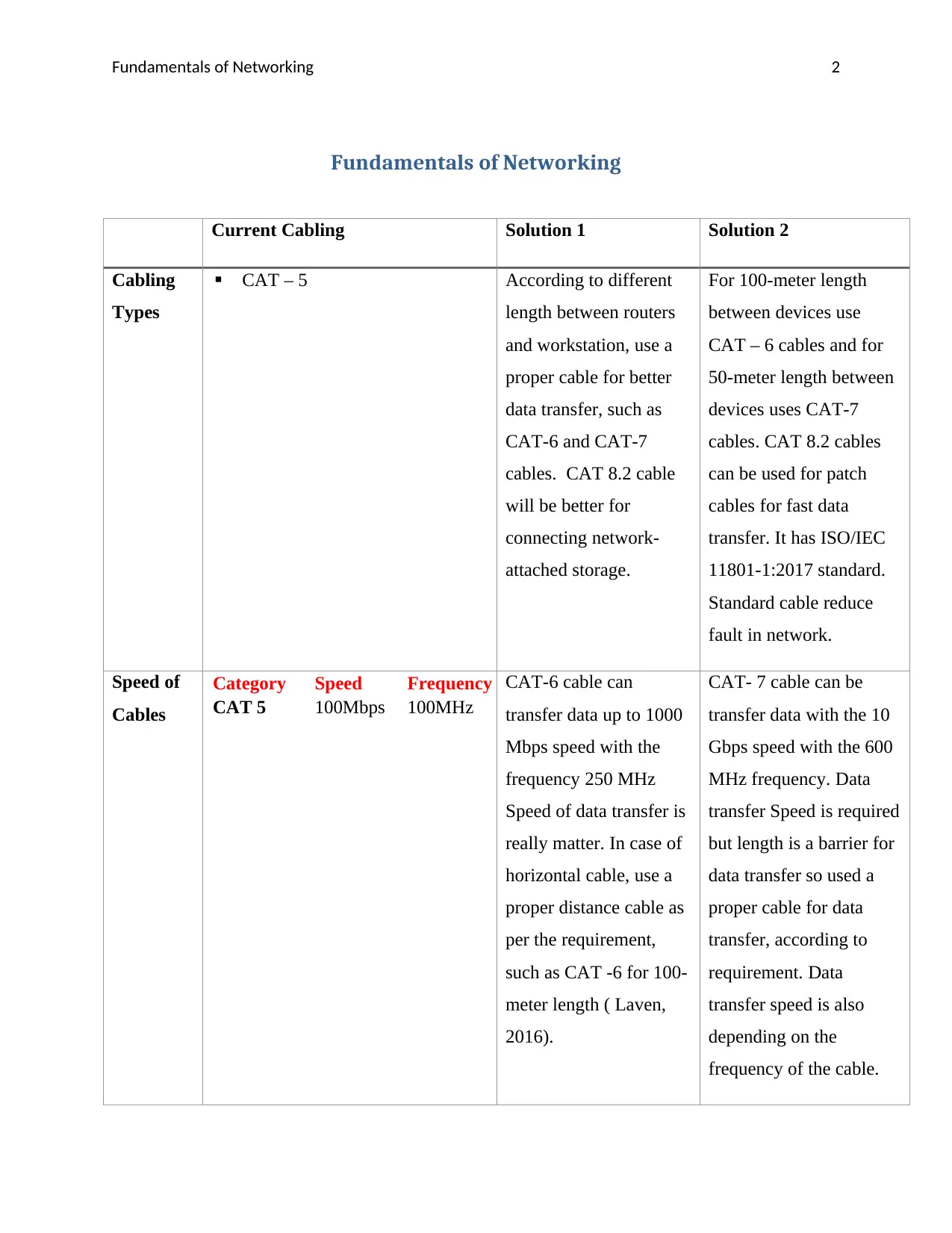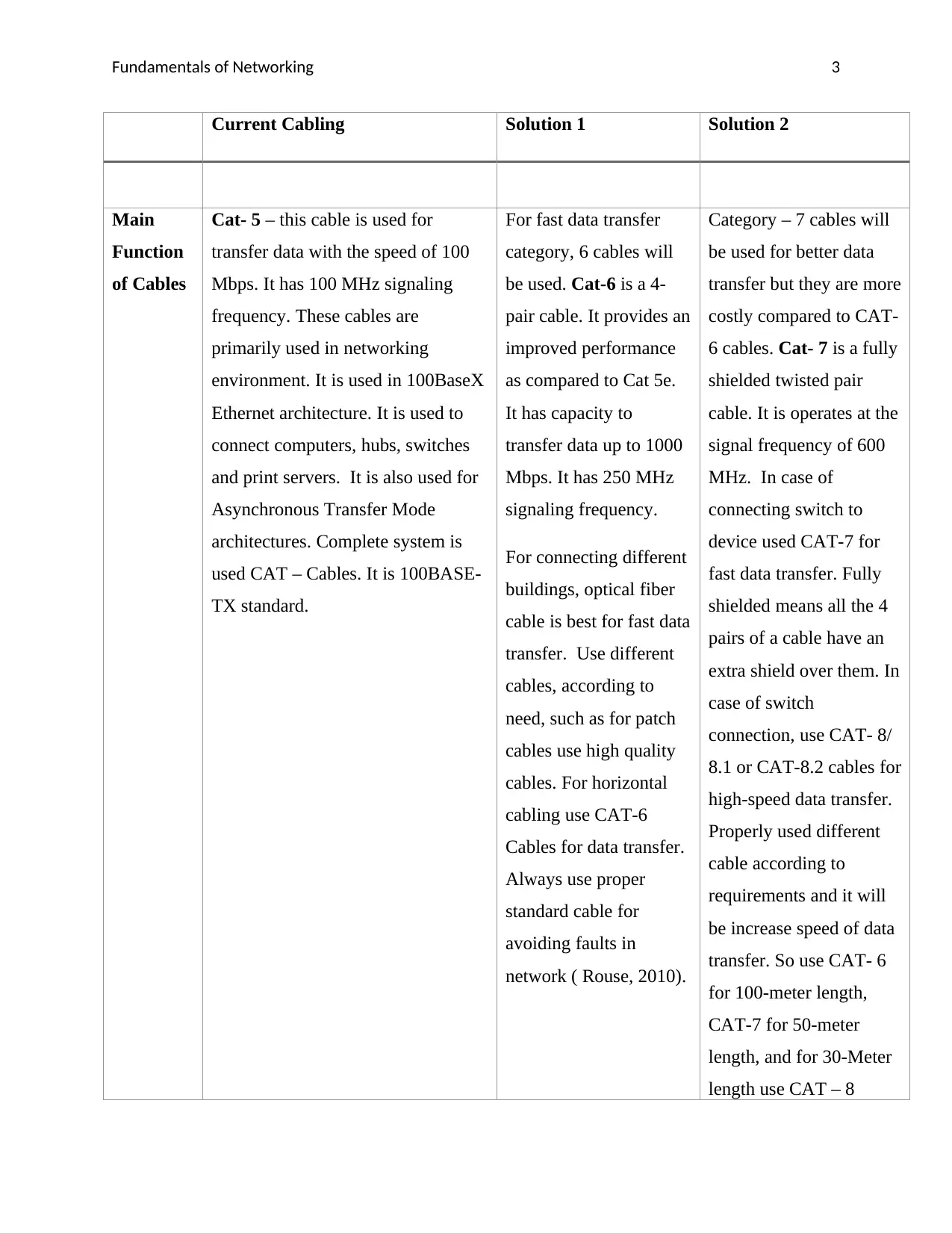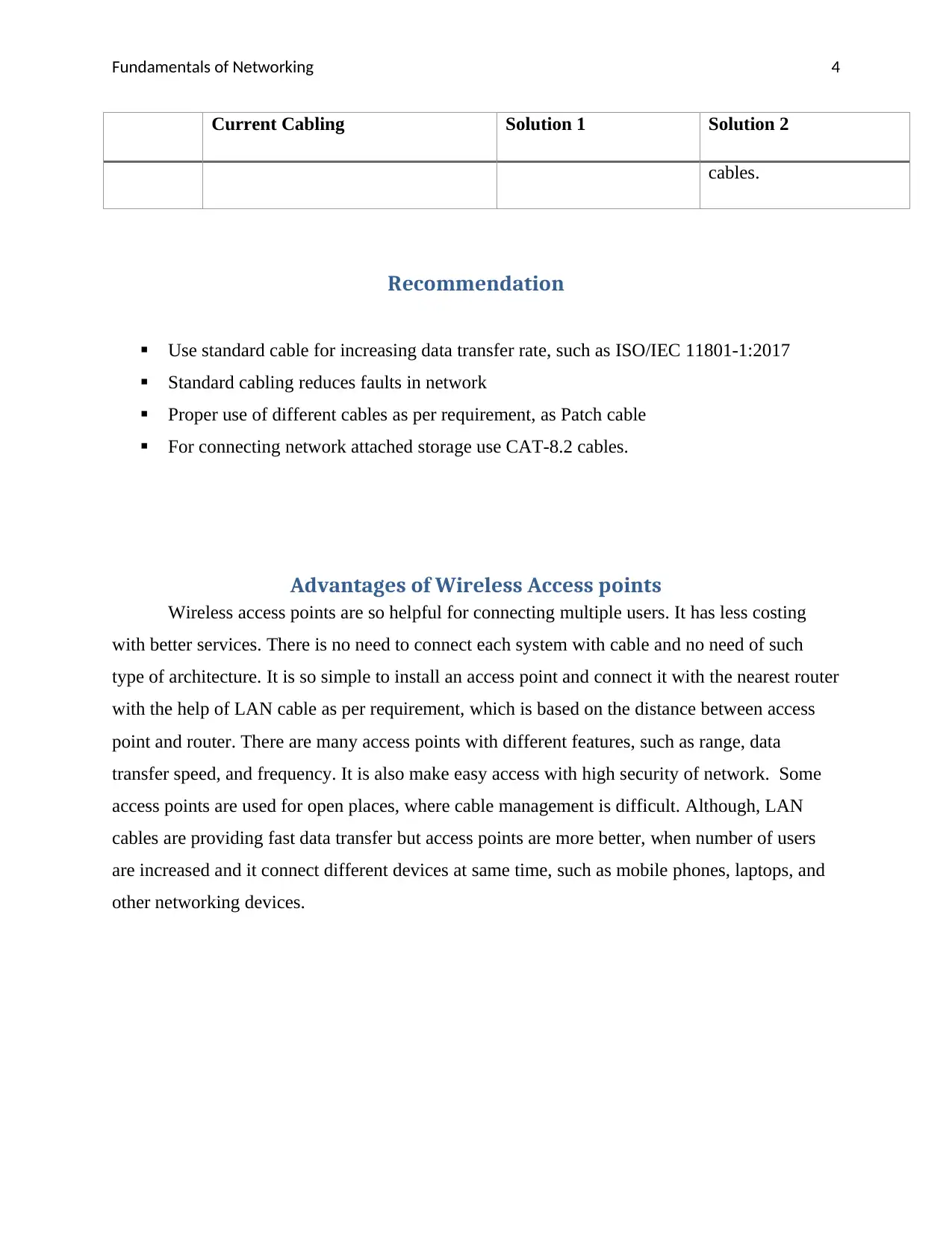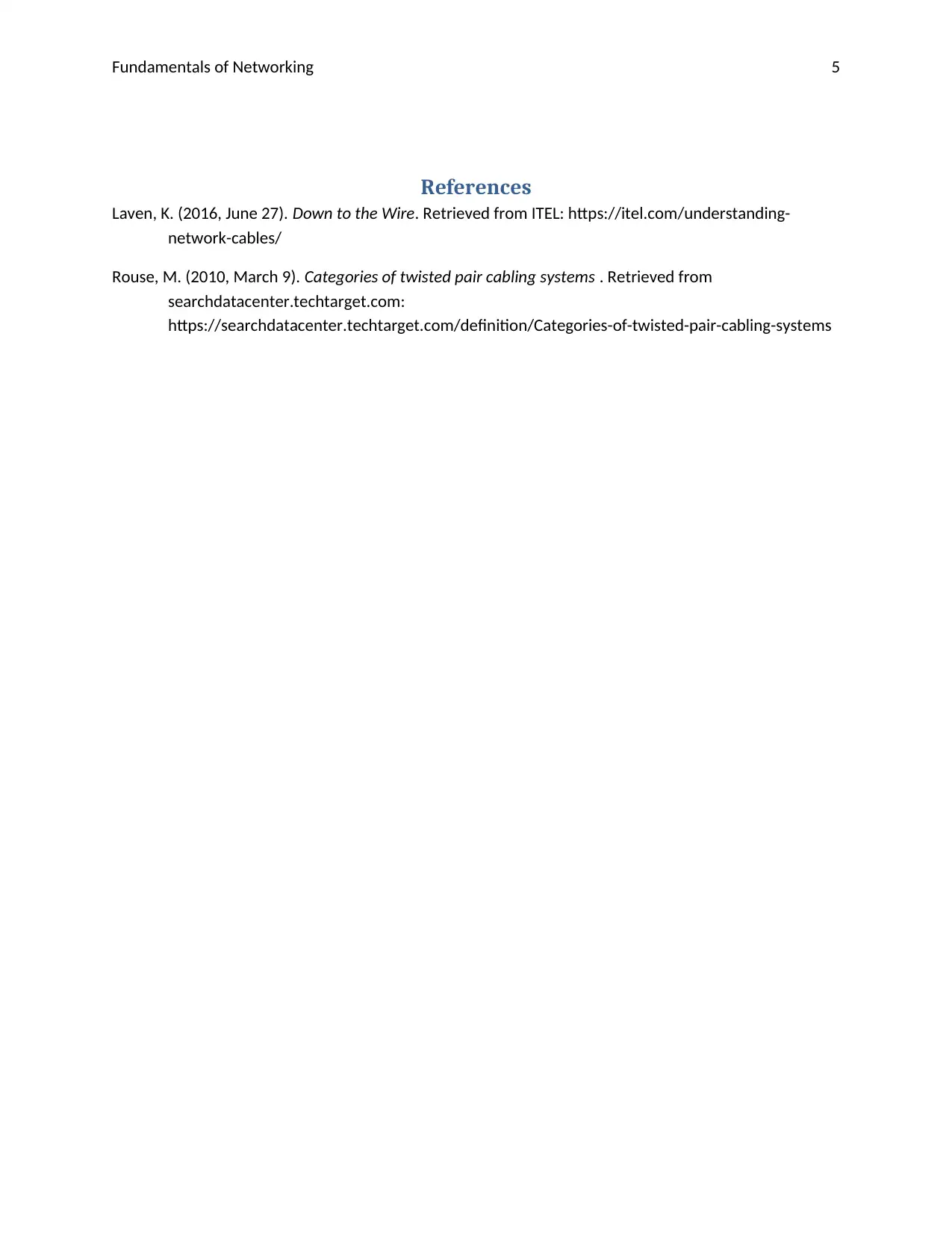Fundamentals of Networking: Cabling Solutions and Recommendations
VerifiedAdded on 2023/06/03
|6
|870
|322
Report
AI Summary
This report, titled "Fundamentals of Networking," examines various cabling solutions to enhance network performance. It begins by analyzing current cabling solutions, followed by detailed specifications of CAT-6, CAT-7, and CAT-8 cables, including their speed and function. The report compares two potential solutions, outlining the advantages and disadvantages of each. It also discusses the benefits of wireless access points, highlighting their ease of installation, cost-effectiveness, and ability to connect multiple devices. The report provides recommendations for cabling standards and proper cable usage to reduce network faults and increase data transfer rates. It concludes by emphasizing the importance of selecting appropriate cables based on distance and data transfer needs, such as CAT-6 for 100-meter lengths, CAT-7 for 50-meter lengths, and CAT-8 for shorter distances. The report also includes references to relevant sources, such as ITEL and searchdatacenter.techtarget.com, to support the presented information.
1 out of 6













![[object Object]](/_next/static/media/star-bottom.7253800d.svg)